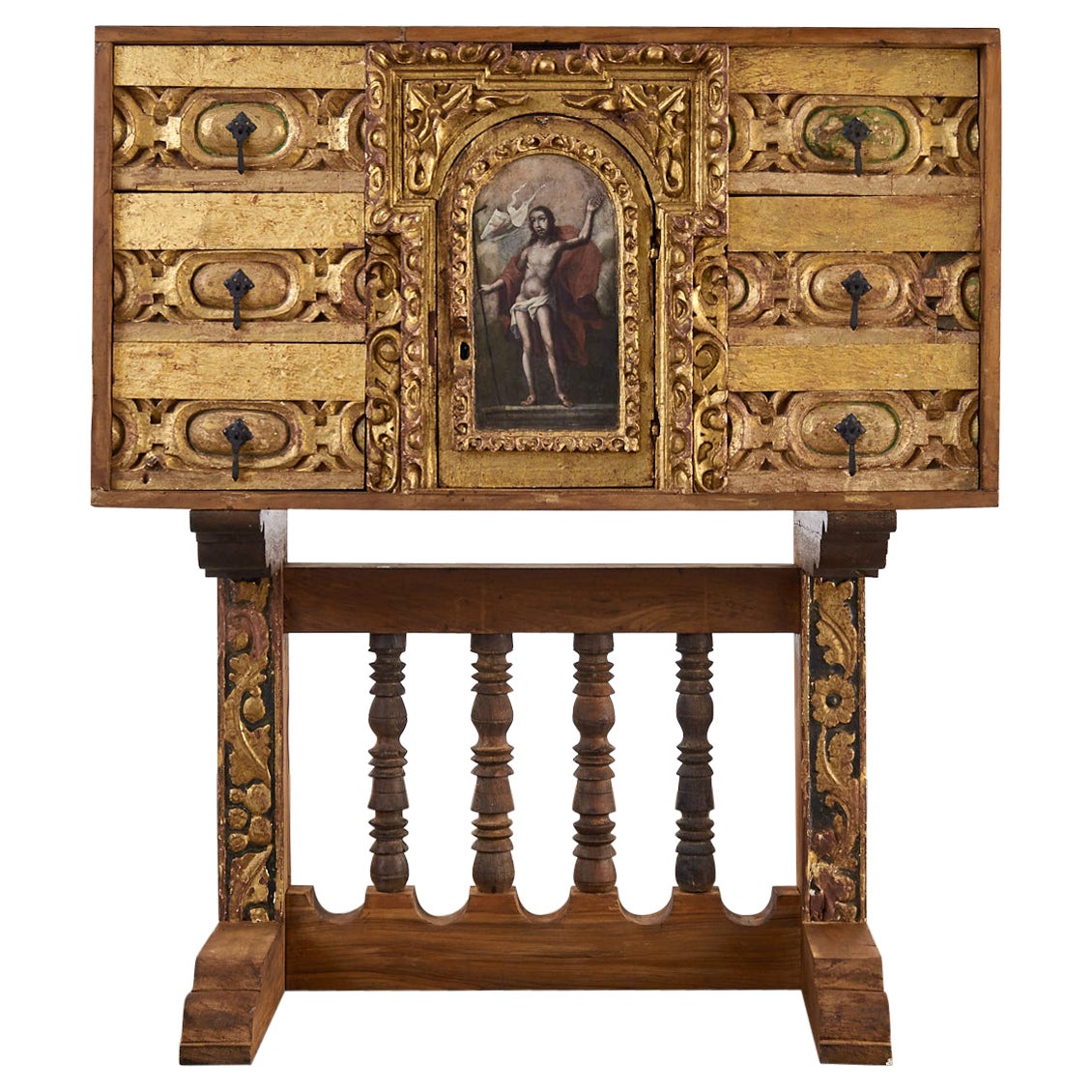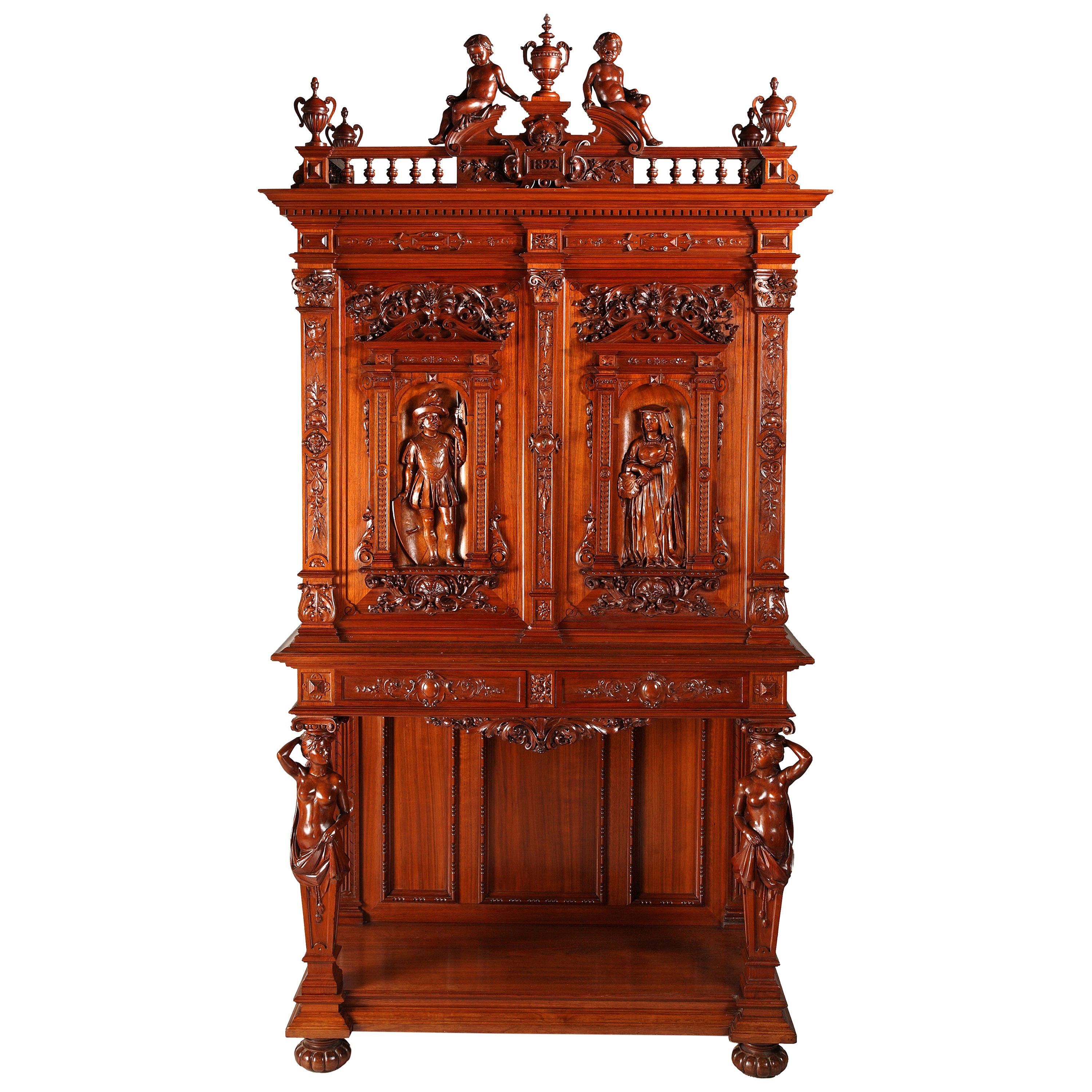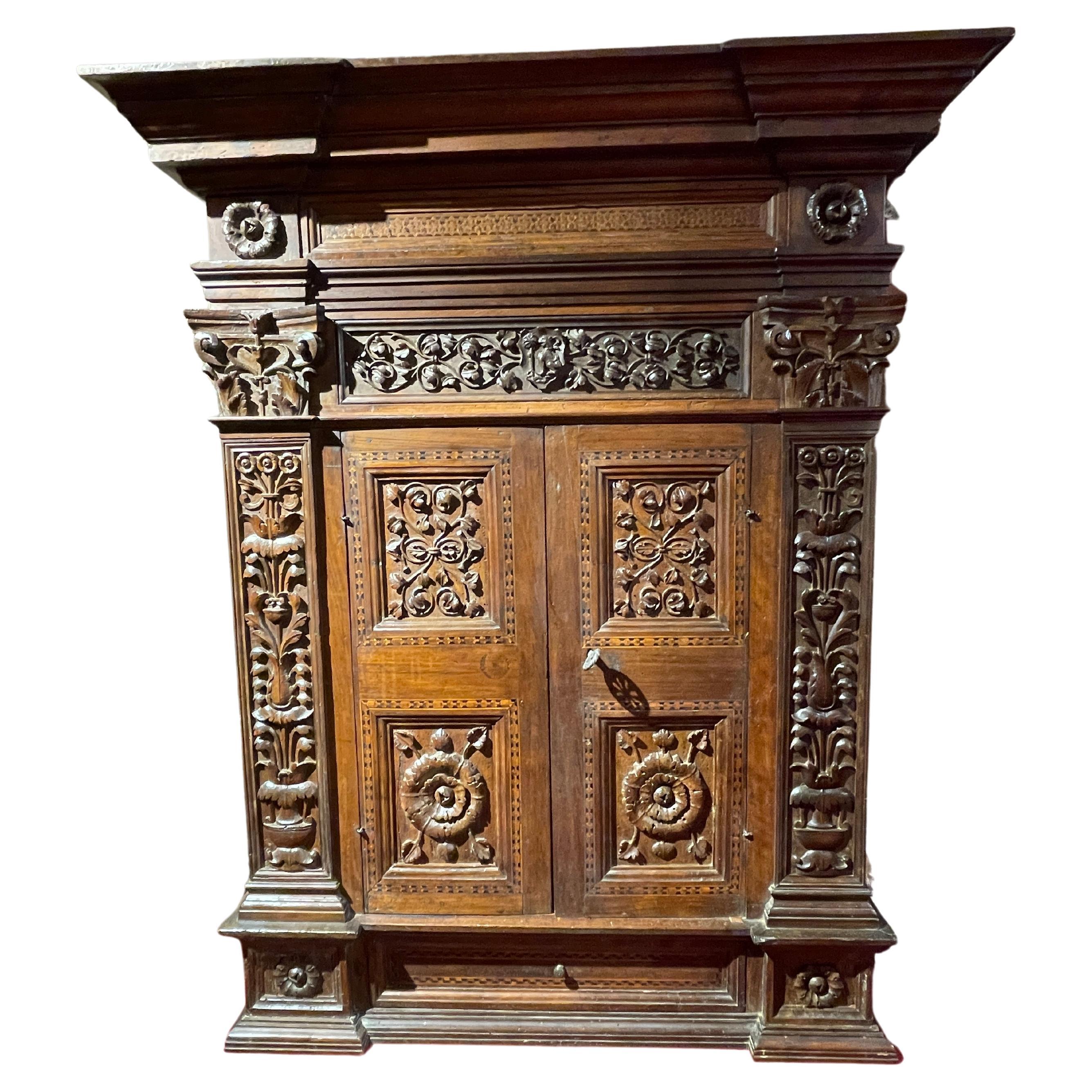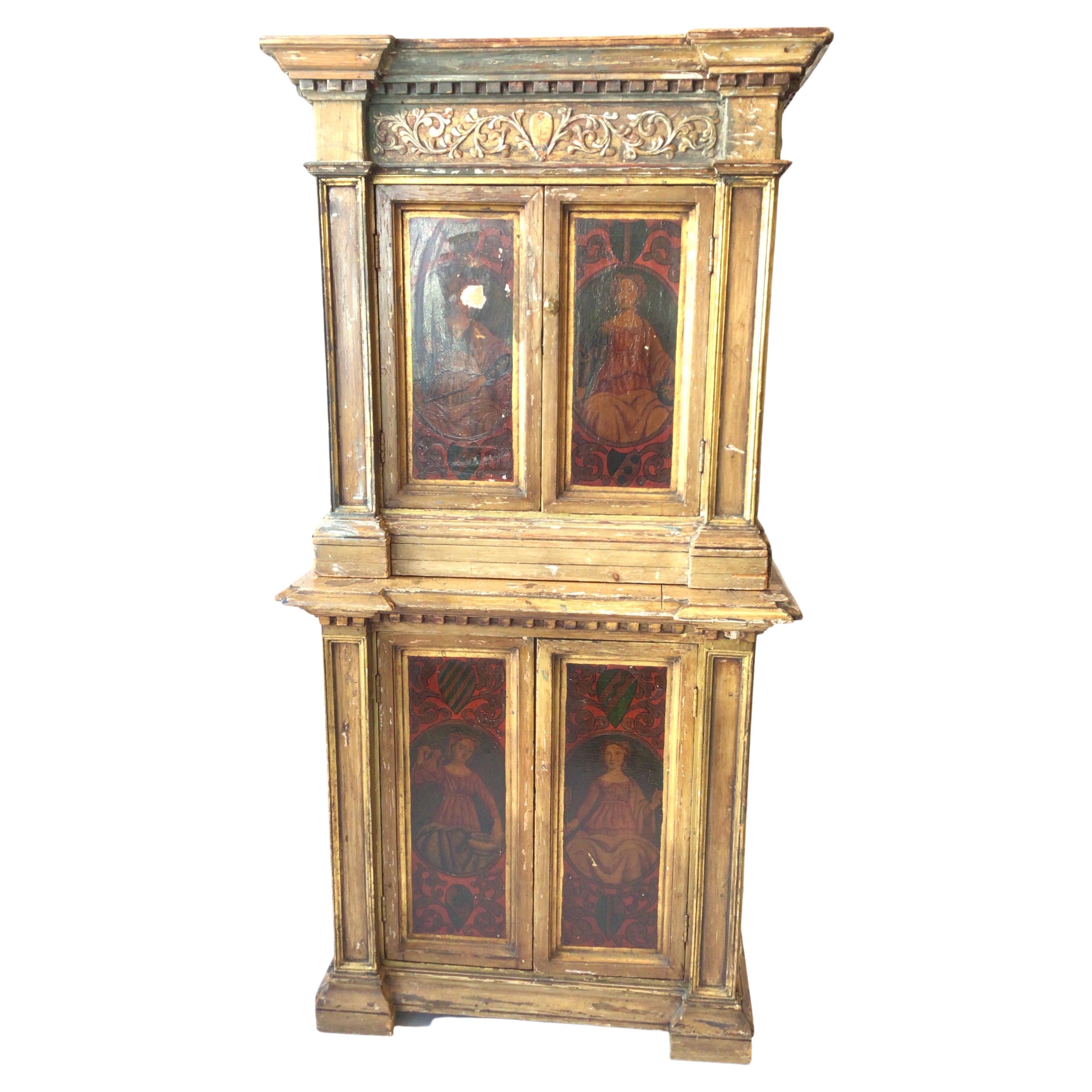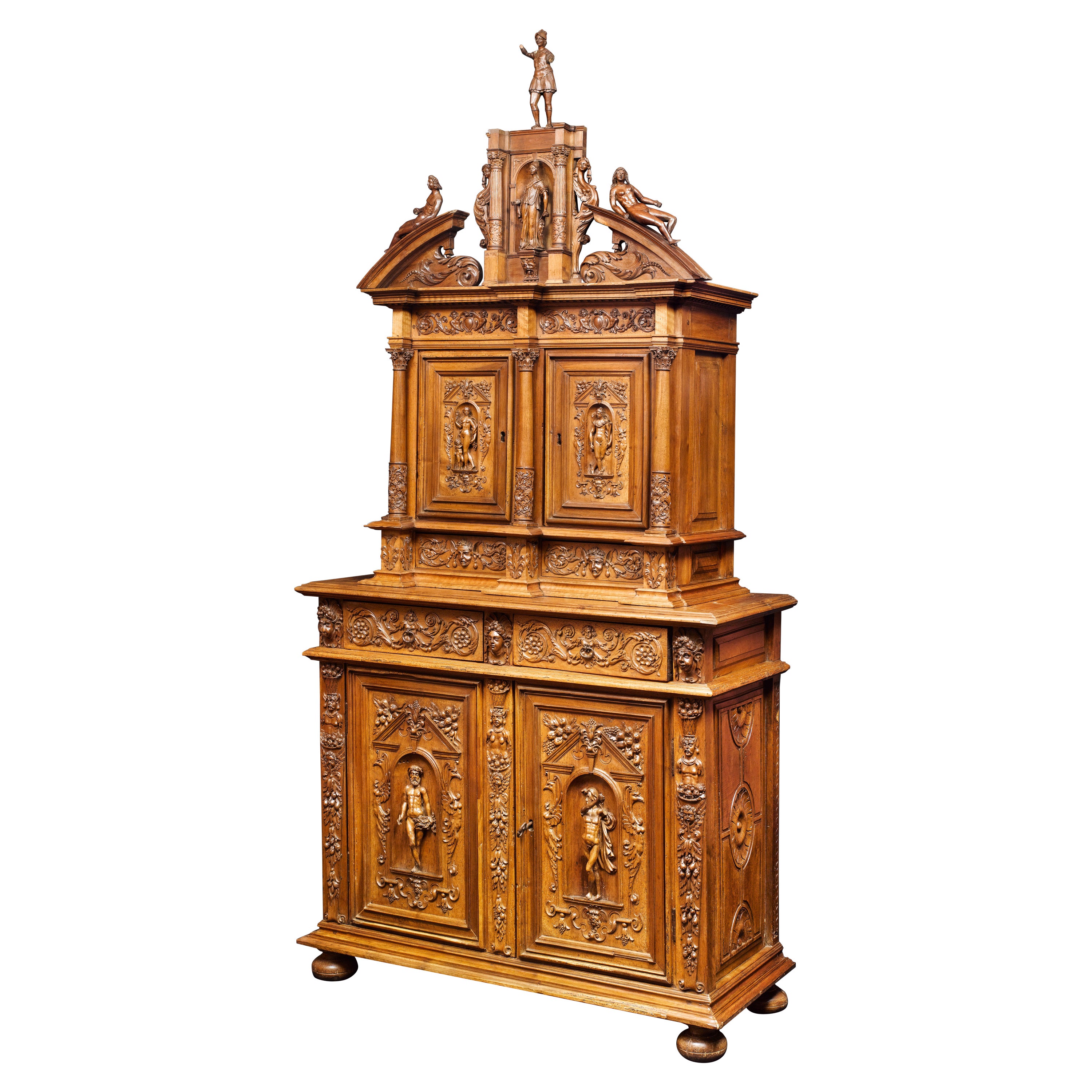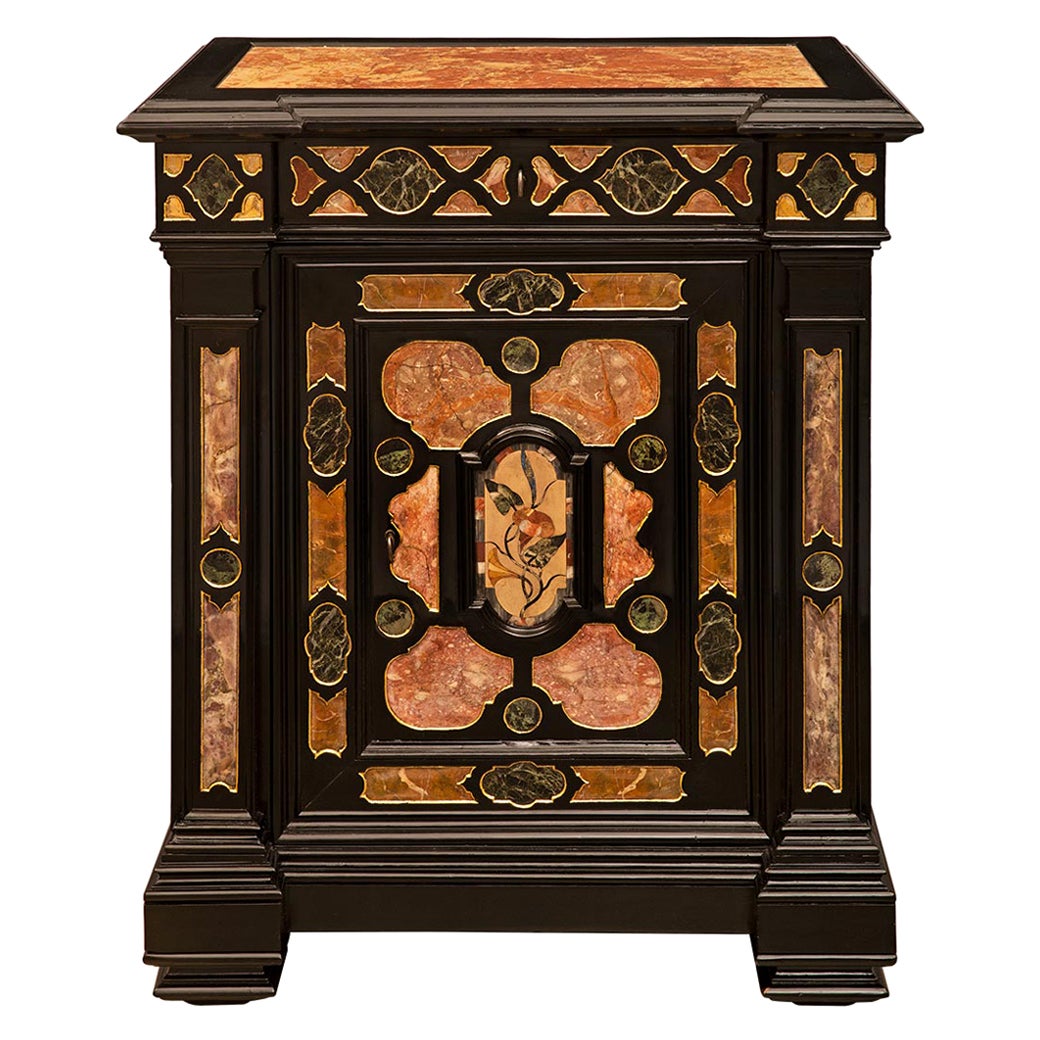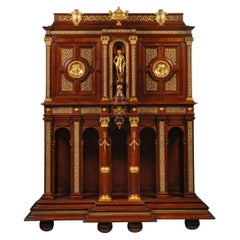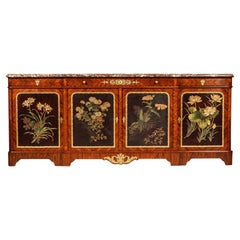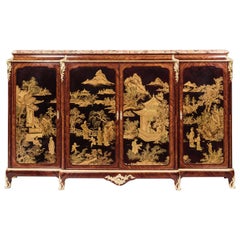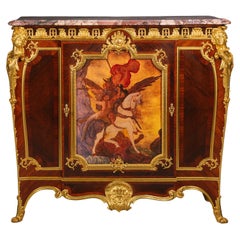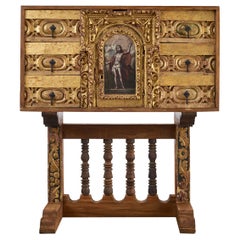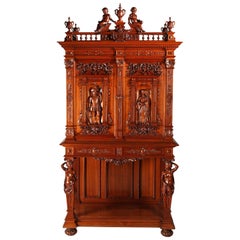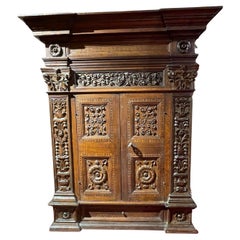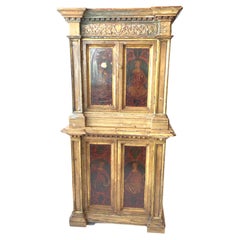Items Similar to Italian Renaissance Revival Table Cabinet by Raphaello Cipriani, circa 1870
Want more images or videos?
Request additional images or videos from the seller
1 of 12
Italian Renaissance Revival Table Cabinet by Raphaello Cipriani, circa 1870
$33,186.29
£24,000
€28,274.92
CA$45,981.26
A$49,896.68
CHF 26,440.85
MX$611,958.52
NOK 327,203.55
SEK 309,190.03
DKK 211,086.38
About the Item
An Italian renaissance revival burr yew wood and parcel-gilt painted table cabinet, by Raphaello Cipriani.
Italian, circa 1870.
The cabinet is inscribed on the back, RAFFAELLO Cipriani FECE VIA DI BARDI 334 FIRENZE.
- Creator:Raphaello Cipriani (Cabinetmaker)
- Dimensions:Height: 23.23 in (59 cm)Width: 31.5 in (80 cm)Depth: 9.45 in (24 cm)
- Style:Renaissance Revival (Of the Period)
- Materials and Techniques:
- Place of Origin:
- Period:
- Date of Manufacture:circa 1870
- Condition:
- Seller Location:Brighton, GB
- Reference Number:Seller: B604301stDibs: LU1028015581542
About the Seller
5.0
Recognized Seller
These prestigious sellers are industry leaders and represent the highest echelon for item quality and design.
Established in 1964
1stDibs seller since 2014
58 sales on 1stDibs
Typical response time: 3 hours
Associations
The British Antique Dealers' AssociationLAPADA - The Association of Arts & Antiques Dealers
- ShippingRetrieving quote...Shipping from: Brighton, United Kingdom
- Return Policy
Authenticity Guarantee
In the unlikely event there’s an issue with an item’s authenticity, contact us within 1 year for a full refund. DetailsMoney-Back Guarantee
If your item is not as described, is damaged in transit, or does not arrive, contact us within 7 days for a full refund. Details24-Hour Cancellation
You have a 24-hour grace period in which to reconsider your purchase, with no questions asked.Vetted Professional Sellers
Our world-class sellers must adhere to strict standards for service and quality, maintaining the integrity of our listings.Price-Match Guarantee
If you find that a seller listed the same item for a lower price elsewhere, we’ll match it.Trusted Global Delivery
Our best-in-class carrier network provides specialized shipping options worldwide, including custom delivery.More From This Seller
View AllGilt-Bronze Mounted Credence by Edouard Lievre, and Paul Sormani
By Edouard Lievre, Paul Sormani
Located in Brighton, West Sussex
A Gilt-Bronze Mounted Credence, Designed By Edouard Lievre, Attributed To Paul Sormani,
In the neo-Renaissance style, the spreading pediment with Vitruvian scroll-fitted frieze, c...
Category
Antique 19th Century French Renaissance Cabinets
Materials
Ormolu
Régence Style Side Cabinet with Lacquer Panels Attributed to Paul Sormani c 1890
By Paul Sormani
Located in Brighton, West Sussex
A superb régence style gilt bronze mounted side cabinet with lacquer panels, firmly attributed to Sormani.
This large and imposing side cabinet has a shaped Rouge des Flandres marbl...
Category
Antique Late 19th Century French Cabinets
Materials
Wood
Fine Louis XV Style Japanned Side Cabinet by Henri Nelson, circa 1900
By Henri Nelson
Located in Brighton, West Sussex
A Fine Louis XV Style Gilt-bronze Mounted Japanned Side Cabinet, With A Breche D'Alep Marble Top, By Henri Nelson, Paris.
French, circa 1900.
Stamped to the carcass 'H. Nelson'. ...
Category
Antique Late 19th Century French Louis XV Cabinets
Materials
Marble, Bronze
A Louis XV Style Vernis Martin Mounted Side Cabinet, Attributed to Zwiener
By Joseph-Emmanuel Zwiener
Located in Brighton, West Sussex
A Fine Louis XV Style Gilt-Bronze and Vernis Martin Mounted Side Cabinet, Attributed to Emmanuel Zwiener.
This cabinet has a shaped pink and red mottled marble top above an acanthus cast frieze flanked by female herm figures to the angles, below is a central cupboard door inset with a finely painted vernis Martin panel depicting Perseus, on Pegasus, Hastening to the Rescue of Andromeda, and enclosing two shelves; the shaped apron centred by a finely cast Bacchic mask, the legs terminating in acanthus and lion paw sabots.
Marked ‘ZN’ to the back of the gilt-bronze mountings for Emmanuel Zwiener and stencilled to the reverse 'KRIEGER PARIS...
Category
Antique 19th Century French Louis XV Cabinets
Materials
Marble, Ormolu
Highly Important Pair of Neoclassical Side Cabinets by Jules Piret, circa 1860
By Jules Piret
Located in Brighton, West Sussex
A rare and highly important pair of neoclassical style gilt-bronze and biscuit porcelain mounted mahogany side cabinets, by Jules Piret.
French, circa 1...
Category
Antique Mid-19th Century French Neoclassical Cabinets
Materials
Bronze
An Empire Style Gilt-Bronze Mounted Satinwood Buffet Cabinet
Located in Brighton, West Sussex
An Empire Style Gilt-Bronze Mounted Satinwood Buffet Cabinet.
The attractive and original Verde Antico marble top above three freize drawers. The central door with a burr-amboyna l...
Category
Antique 19th Century French Empire Cabinets
Materials
Marble, Ormolu
You May Also Like
Spanish Baroque Bargueno Style Gilt Cabinet Chest on Stand
Located in Rio Vista, CA
Rustic large Spanish baroque bargueno style cabinet or chest on stand crafted from thick pine. The beautiful case has exposed dove tail joinery and features 6 large storage drawers and is centered by an arched storage door with an ornate carved surround and an old master style religious painting on the door of Christ. The drawers have decorative cartouche designs on the front with an iron pull in the center and finished in gilt. The cantilever style stand has two square leg supports decorated with acanthus vines and gilt finishes flanking four turned supports attached to stretchers. Decorated in the style of a Bargueno or Vargueno desk...
Category
Antique 19th Century Spanish Baroque Cabinets
Materials
Iron
$3,840 Sale Price
20% Off
Renaissance Style Wooden Cabinet Attributed to H.A. Fourdinois, France, 1893
Located in PARIS, FR
A wooden cupboard, elaborately carved throughout, dated "1893" on the crest and attributed to H.A. Fourdinois. The upper section with a pair of cherubs at the center of a balustrade ornamented with two-handled urns, two architectonic doors below, carved with lady and gentleman in niches surrounded by extensive carving with classical motifs. The lower section with two drawers above a standing female caryatid support at each front corner. The all reposing on four gadronned round feet.
The Fourdinois company was founded in 1835 by Alexandre-Georges Fourdinois (1799-1871). The Universal Exhibition held in London in 1851 was undoubtedly their first great artistic and public success. Winning the Great medal for a neo-Renaissance buffet...
Category
Antique 1890s French Renaissance Cabinets
Materials
Wood
$15,802 Sale Price
40% Off
Rare Renaissance Florentine Cabinet with Certosina Decoration
Located in Saint-Ouen, FR
RARE RENAISSANCE FLORENTINE WALNUT CABINET WITH CERTOSINA DECORATION
ORIGIN: FLORENCE, ITALY
PERIOD: END OF 15th CENTURY – BEGINNING OF 16th CENTURY
Height: 129 cm
Length: 107 cm...
Category
Antique 16th Century Cabinets
Materials
Walnut
1870s Italian Renaissance Style Painted Cupboard
Located in Tarrytown, NY
1870s Italian Renaissance style 4 door cupboard. Hand painted scenes on each door. Purchased from the Natale Busoni Gallery in Florence.
Category
Antique 1870s Cabinets
Materials
Wood
Renaissance Cupboard from Loire Valley, 'France'
Located in Saint-Ouen, FR
This cabinet is composed of two bodies, the upper one being recessed. The extraordinary proportions are enriched by a mythological and floral carved decor.
The Lower body stands o...
Category
Antique 16th Century French Renaissance Cabinets
Materials
Walnut
Italian 19th Century Baroque St. Fruitwood & Semi-Precious Stone Cabinet
Located in West Palm Beach, FL
A stunning Italian 19th century Baroque st. ebonized Fruitwood, marble and semi-precious stone specimen cabinet. The one door one drawer cabinet is raised by elegant square mottled f...
Category
Antique 19th Century Italian Baroque Cabinets
Materials
Marble
More Ways To Browse
Antique Renaissance Cabinets
Italian Renaissance Revival
Late Renaissance Italy
Renaissance Cabinet Italy
Italian Renaissance Cabinet
Burr Yew
Antique Painted Kitchen Tables
Wood And Brass Display Cabinet
Antique China Cabinet
Antique Chinese Cabinets
Antique Display Cabinet Furniture
Black Mid Century Cabinets
Antique Italian Kitchen
Late Renaissance
Antique Doors Single
Antique Black Cabinet
Vintage Brass Glass Cabinet
Black Lacquer Storage
